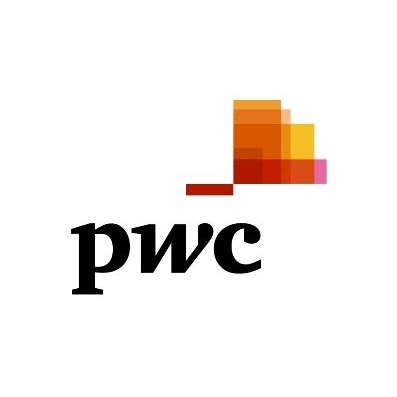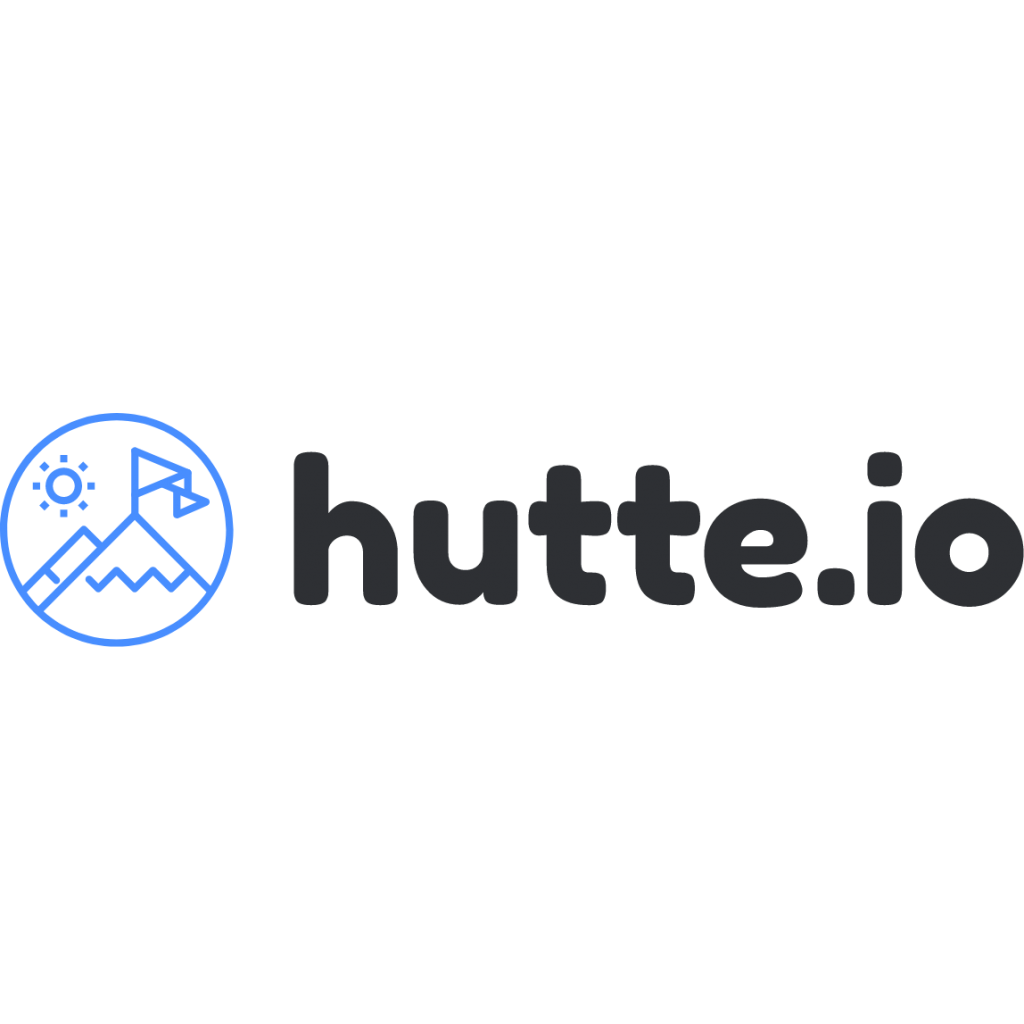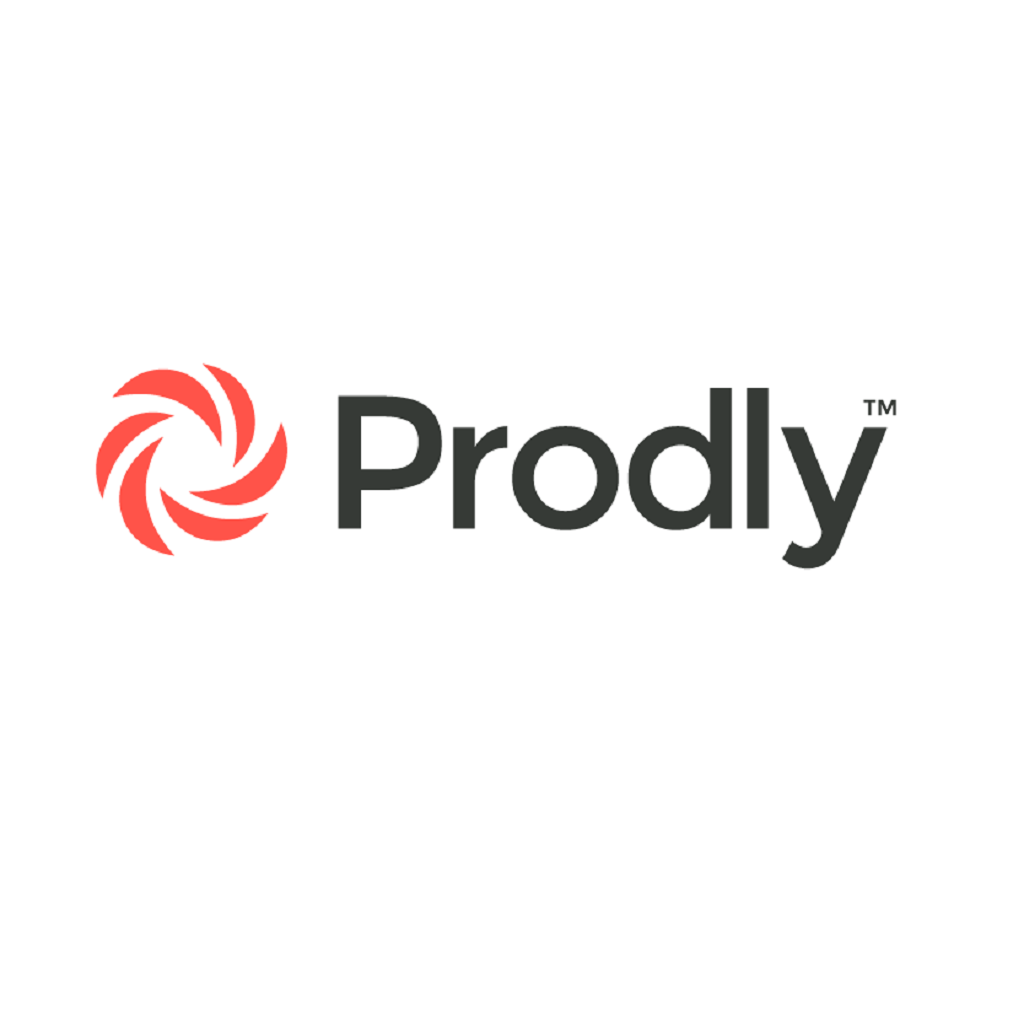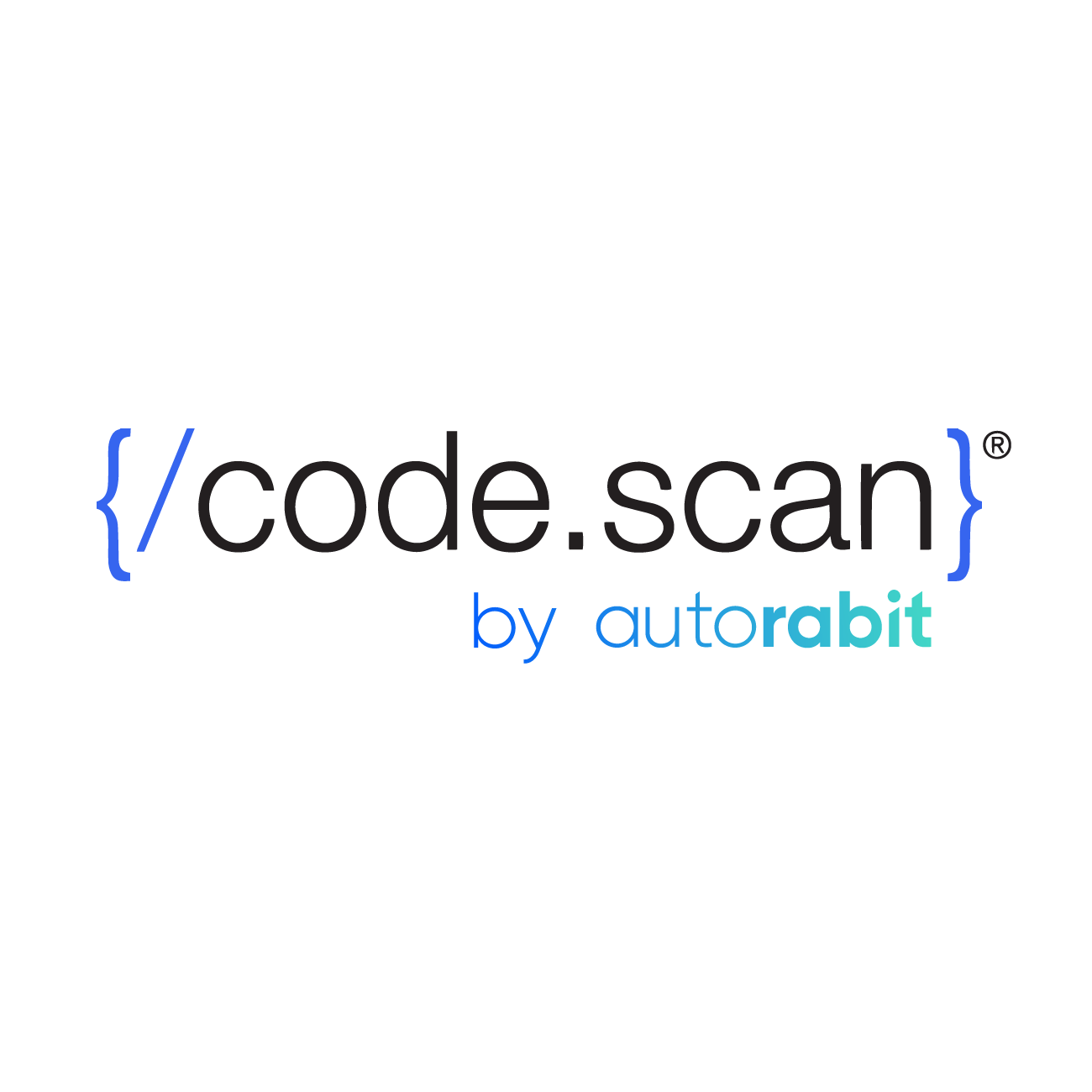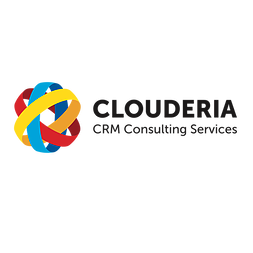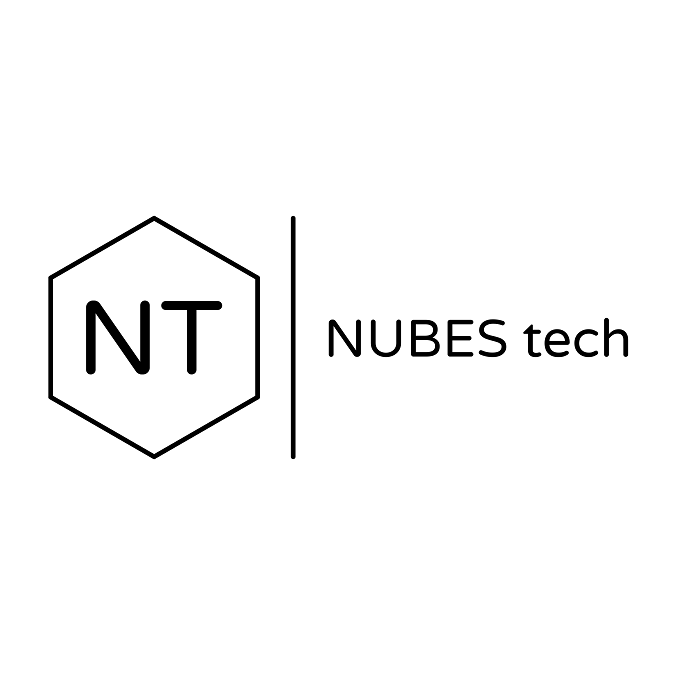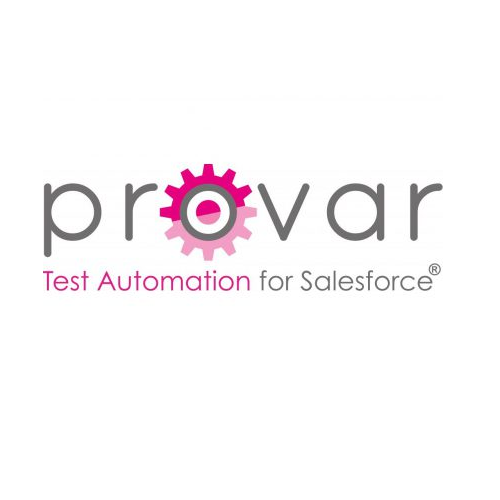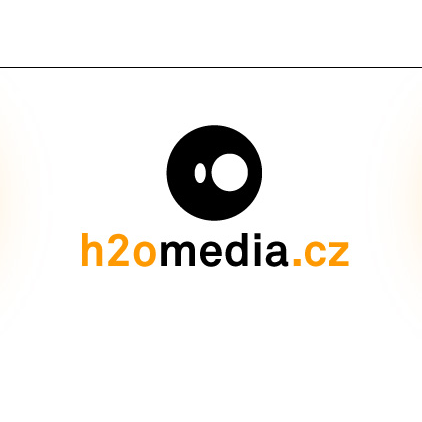CzechDreamin 2022 summary
400+ paid attendees from all over the world; 380+ attendees on-site; 50 sessions; 10 % admins, 16 % business users,…
CzechDreamin 2022 photos
Because there are never enough photos and we have plenty of great one. Check the whole collection and enjoy.
Program Schedule
We are extending the schedule as additional speakers confirm their presentations. Stay tuned!
- All
- Panorama Hall
- Club A (Architects)
- Club B (General)
- Club C (Marketers)
- Club D (Developers)
- Club E (Developers)
8:00
The doors will open. Coffee & tea ready to put you up to speed, you already had your breakfast at home or in the hotel. Time for catch-up with friends or get a new friends.
Swags for the quickest, sponsors full of energy as well.
8:45
Everyone ready for the welcome words, already seated in the main room. We cannot wait to see you and have a selfie with you.

9:00
Keynote time. Alex will guide us through the next generation of automation tools in Salesforce.
9:45
Quick break. The quickest will be able to grab another tea & coffee, visit sponsors to get additional stamps to the collection for the raffle at the end of the day. And quick chat with friends before each of you will run into different room.

10:00
Process Automation Revisited: From Chaos to Structure, Paweł Dobrzynski (@PDobrzynski), 201 level
Declarative automation is a great tool that helps automate processes without using the code.
But as your system develops the growing number of workflows start to interfere and things do not always go as expected. With the recent introduction of record triggered flows, the landscape changes even more, and admins should revisit their approach to process automation.
In this session we will walk through the best practices of building flows, and present some tips and tricks on how to avoid common mistakes. You will also learn how you can organise your flows to effectively manage the increasing complexity and keep your automation predictable.
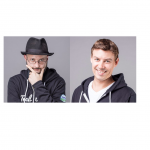
10:00
Having serious fun with lwc-datatable and Large Data Volume, Christian Knapp (@ch_sz_knapp) & Christian Menzinger (@chris_menzinger), 201 level
Interactive data-tables are awesome and a challenge – LWC’s lightning-datatable is no exception. It has many, useful features, lots of documentation and can handle various use cases from working with single fields to several records.
Loading Salesforce records with a fixed set of fields and a fixed set of column labels is straightforward and quickly done.
What about the next level, though? Loading a related list for example? Sortable. Searchable. Displaying the table in the user’s end language, with translated columns and values, too, where supported. Scanning a Large Data Volume like 70.000 records.
This talk will not provide a solution. It will focus on the path to a possible solution: Given all these requirements, where do I start? Where and how do I get test records? And 70k! Should sorting happen in the datatable or should Apex do the lifting? Which APIs do I use? When? How often? Where? Why?
Our heroes, Krtek and Dwarf, really had some serious fun with lightning-datatable and 1.5M products: They faced performance issues with 2000 rows in a table and learned that those issues can be mitigated with a few lines of code in Summer 22. At the end, the best way is lazy loading for data table because it also keeps Apex Limits in check.
They also proved that 1.5 millions records fit into a Scratch Org and showed why Snowfakery is a great way to auto-generate test data.

10:00
Three pillars and Seven specializations – Product Development Outsourcers Program in a nutshell, Jakub Stefaniak, 101 level
Salesforce announced PDO (Product Development Outsourcer) Program more than 5 years ago. If you still have no idea what is it about, it’s the right time to change it!
We’re going to start some historical background and speak about a dark time full of failed projects and tears. Then, we’re going to discuss seven specializations aligned with typical AppExchange Product LifeCycle phases and the three pillars which helped to ends these times of misery: Knowledge, Experience, and Quality.

10:00
Managing Complexity in Salesforce, David Felkel, 201 level
Complexity kills – Simplicity is robust. There is a strong correlation between the size of an org and its complexity. The more complex your org becomes, the harder it is to maintain and the costlier your development endeavours become. But where does complexity come from and how can it be avoided?

10:00
Real-time personalization at scale by Salesforce CDP and Interaction Studio, Ekaterina Obolenskaya (@EkatObolenskaya) & Samuel Liska, 201 level
How can companies efficiently manage their separated data sources in one place and deliver personalized experiences to their customers?
During the session we will introduce you the main Salesforce CDP aspects, as a platform for solving the problem of data unification and identity resolution in order to prepare a complete view of your customers and its usage as a single source of truth.
Additionally, with the intention to build truly relevant and connected customer experiences we use natively integrated Interaction Studio platform. It is responsible mainly for managing customer interactions and delivering real-time AI-driven decisioning and granular one-to-one optimization.
During the session we will show case how you can leverage unified data from Salesforce CDP and build trusted relationship with your customers.

10:00
Intro to the Nonprofit Success Pack, Trish Perkins
Salesforce gives ten free Enterprise Salesforce licenses to qualifying nonprofits all over the world.
Sometimes, just encountering Salesforce for the first time can feel overwhelming for a nonprofit that has, heretofore, relied on spreadsheets or simple databases to keep track of their work.
Trish has been working with this NPSP package since its first iteration, and enjoys taking her clients through a “Kick the Tires” session– a walkthrough of what comes with the package, including some features that many nonprofits don’t know they need or want.
We’ll walk through our engagement with a contact, Minnie Mouse, and all the ways that she and her family are involved in our organization. Our tour will take us through Fundraising, Program Management and Volunteer Management. We’ll look at the basic Nonprofit Success Pack objects.

10:30
Salesforce DevOps Maturity Matrix, Anna Walach, 401 level
How mature is your release process? We would like to think that we have almost forgotten about the times when state-of-the-art release process involved only ANT, few sandboxes and version control system. The truth is, many Salesforce projects still do not care about sfdx cli, are reluctant to try out scratch orgs and automated testing is considered too much hustle. In the modern world, an efficient DevOps strategy is key to an agile, but robust release process.
Not many materials exist to help set up advanced Devops process for Salesforce. Come and learn about what are the different areas that should be considered when designing a great release process, but also what are the different stages of advancement for each of those areas. Do you need to develop everything in-house? Or maybe use some existing frameworks? Or maybe there are feature-full solutions that you can just deploy? Let’s discuss methods that can be applied in different environments to find out the best strategy to get from where you are now to reach a desired ambition level of improvement and efficiency.

11:00
How to migrate to Apex Enterprise Patterns?, David Fernandez, 201 level
Currently most implementations are based on multiple APEX patterns and factories that makes really complicated the work between several developers or teams.
The session will be explain how to migrate from a more monolithic code and way of solving requirements into a more extensible way, this by showing how to change the thinking and ways of coding for experience developers but also show the junior devs to think in a more scalable way since the beginning of projects.

11:00
Top 5 tips to get your data squeaky clean, Andre van Kampen (@AndreKampen), 101 level
The most valuable component of your Salesforce environment is the data it holds. Bad quality data will get in the way of user adoption and the integrity of your metrics. Nobody has time for unreliable reports and dashboards, right?
In this presentation, I will show you why data quality matters for your environment, no matter the size or age of it. Also, I will share 5 tips on how to get the data in your environment squeaky clean.
#DataQualityFramework #InformationStrategy #MasterDataManagement

11:00
Real time marketing with Salesforce Marketing Cloud, Anastasiya Penska, 101 level
The session will focus on how one can start using Marketing Cloud for real time interaction with your cusomters and show a demo use case of how to build a personalized customer experience on different stages of customer journey. The use case will showcase data capturing about an unknown visitor, engaging potential customer with personalized content and later on curating further communication with a known customer in different channels to create 1:1 communication.

11:00
Combining EDA & API-led Connectivity through MuleSoft for integrating Salesforce with multiple ERPs, Marcelo Caponi, 201 level
Event-Driven Architecture (EDA) has been widely adopted for companies looking to accelerate their digital transformation. These companies realized that batch-based, point-to-point Integrations slow down the business and leave a technical debt. EDA improves the ability to react to changes in real-time and improves the overall customer experience. API-led connectivity approach unlocks data through APIs allowing companies to create a composable business. In this session, I will share how to integrate Salesforce with multiple ERPs by combining EDA & API-led Connectivity through MuleSoft.

11:00
How to work with risks in Salesforce projects?, Tomáš Holý (@enehanosolution), 201 level
When it comes to risks, everyone usually knows that we need to care for them during the project, but how, when, and what is the main purpose is harder to understand. So let us focus on catching how risks impact the project price. How they differ project by project.
I will also compare risks in agile to traditional models giving you examples specifically for Salesforce projects. Last but not least is managing risks in Bodyshop or Fixed Time & Fixed Price contract model.
Do not underestimate risks in your projects. It is a key factor for successful delivery.

11:00
The tooling Api demystified, It is not only for developers, Doria Hamelryk (@doriahamelryk), Fabrice Challier, 201 level
We all know that moment when you are running a Salesforce project for a couple of months (or even years), and we need to do a configuration review.
Which field is not used anywhere, which permission set is assigned to which user, do we have duplicates in our custom labels…
Tricky right?
What if you had the opportunity to retrieve all this info with just a query.
And be sure, Admins will use it even more than developers

11:30
Business analytical craft in context of Salesforce implementation, Jan Zámostný, 201 level
Should we follow the general business analytical approach on Salesforce projects? Should all BA’s be BABOK certified? Is business analysis a different job when implementing SF? Should business analyst be also a solution architect and admin, or even developer? What are advantages and disadvantages of such approaches? What BA tools to use?
Do you like these questions, and have many more?
Let’s try to find answers together!

11:30
Beyond Marketing Cloud Content Builder – Content Builder Block SDK, Jakub Lysáček, 201 level
What is a Custom Content Block and why would you need one? How can we drive marketing effectiveness and make content creator’s job easier by extending standard Content Builder functionalities?
I will cover overall architecture, the process of creating custom blocks and common use cases, such as custom feeds, maps, charts, or any third-party widgets.
12:00
Lunch time
Something typical counting with vegetarians and non-vegetarians as well. Beer included, as well as something sweet to get you ready for the next BIG thing.
13:00
Demojam
Come to see our partners showing you their applications in 3 minutes. No need to have a call with them taking 1 hour of your time, if you can learn everything in such short time. And we will award the best of them at the end.

13:30
Is a Hamburger a Sandwich? Architecting a Salesforce App, Melissa Hill Dees (@melissahilldees), 101 level
Creating the perfect Salesforce app can be frustrating for everyone: admins, developers, consultants, customers, users. Do you know what you want to order? And what do you expect it to be when it arrives? Let’s talk about what you need to know to get the most out of solutioning in Salesforce. Walk away with a new approach to aligning wants, needs, definitions, and processes with stakeholders.
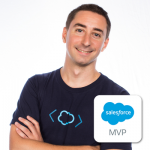
13:30
Build your apps everywhere with Lightning Web Components Open Source, Fabien Taillon (@FabienTaillon), 201 level
Did you know that several parts of the tools you’re using on the Salesforce Platform are open source? That you can create a LWR Community using Lightning Base Components and Lightning Design System and host it wherever you want? That you can benefit from new features being part of LWC but not yet available on the Platform like Light-DOM or dynamic components creation? And that some of your existing components can be reused quite easily?
If not, come and see how powerful Lightning Web Components Open Source are!

13:30
What I have learnt from org merges?, Robert Szerencses (@RobiSzerencses), 201 level
Are you facing the challenge of org merges? It is complex and huge as it sounds. What to consider in the planning phase? What will be the order of subtasks? What to expect from stakeholders? What are the typical pitfalls? And what you can do to avoid future headaches when org merge is not even on the horizon?
Having real life experience in org merges two times already, I am happy to share my experiences from an admin’s perspective. You will walk away with the main roadmap of an org merge project and a list of potential errors to avoid.

13:30
Run End-to-End Tests with the UI Testing Model (UTAM), Phillipe Ozil (@PhilippeOzil), 201 level
Testing apps is critical to ensure quality and there are different types of tests such as unit tests, integrations tests or end-to-end tests. Join this session to learn about end-to-end tests and discover the UI Test Automation Model (UTAM). UTAM is an Open Source solution built by Salesforce that lets you run UI tests on any kind of app. We’ll walk you through a practical example with a Salesforce app and you’ll learn about the key features that make UTAM a game changer for UI testing.

13:30
SFMC Customer Journey Case Study: How to scale a project for the global leader in the automotive industry, Kristýna Turner, 101 level
Join me for the session, where I take you through some key learning of a recent project within SFMC for one of our global clients – a leader in the automotive industry. I’ll show you how to deal with the project plan, management, execution, and delivery within a very ambitious timeline and with limited resources.

13:30
What (and why) Admins need to know about Unit Testing, Julio Fernandez (@julipool) & Dorian Sutton (@dorianDBass), 201 level
Sometimes, Salesforce changes can have side effects that are hard to predict. As a Salesforce Admin you need a range of detective skills to investigate confusing behaviour and cryptic error messages.
Does your Salesforce Org have a mixture of declarative and code-based customisation? If so, have you ever run the Unit Tests in your Org?
You have a very powerful tool to investigate and diagnose issues. That tool is Unit Testing, and it’s not only for Developers.
In this session you’ll learn what Unit Tests are, how to run them, and how to interpret their results to get you back on track.

14:00
Lessons from implementing Salesforce Industries / Vlocity in Insurance, Jiří Krám (@jiri_kram), 401 level
In 2020 Salesforce acquired Vlocity, which became now part of Salesforce industries offering (SFI).
This session will be deep dive into the core components of the SFI package for insurance are and how it works together with the Financial Services Cloud specifically focusing on the Insurance vertical.
You will learn:
- What is Ommistudio and its main components
- What is OmniScript how it differ from Flow
- What is DataRaptor and how to use it
- What is Integration Procedure and how it differ from Salesforce APIs
- What are calculation procedures and matrices and how it differs from formulas
- What is Flex Card and how does it differentiate from LWC
- What is Product Admin in SFI and how differs from Product2 object in Salesforce
- What is Policy Admin and where to use it
- What is Quote and how differs from Salesforce CPQ process
- How SFI leverages Experience Cloud
- How to design an Insurance model in FSC
- Main highlights for implementing SFI in Insurance

14:00
Known and unknown Salesforce Marketing Cloud limitations… and some workarounds ;-), Cyril Louis (@cyril_louis)
As a Marketing Cloud newbie, you may want to be aware of Salesforce Marketing Cloud limitations! And as a veteran, you may have already faced some limitations…
So what if the Trailblazer Community could support you and share tips and tricks to anticipate limitations?
Join me in this session to learn from what I have faced around topics such as testing, data sync, lead scoring, customer journeys and more.
*Tips you don’t have from official online documentation*

14:00
Beyond the Customer: Salesforce in better Talent Acquisition & Engagement- SF Einstein & Analytics way!!, Mohammad Eusuf Daud (@medaud1), 101 level
Marketing Cloud can be leveraged to manage and evaluate the job-postings, email automation and chatbot on carrier page can improve the candidate journey. Custom development of SF platform as HRM facilitates employee engagement. Integration between SF Einstein Analytics and Einstein NLP with cloud data-lake has been helping the customer in identifying better talents, 60%+ saving in effort on recruitment, selection and onboarding. Einstine Chatbot acting as HR helpdesk as well as an assistant in upskill training. The presentation will focus on the business value delivered by Salesforce ecosystem with AI & Big Data using Mulesoft as Enterprise Service Bus. The presentation will also touch the concept of Design Thinking & Agile in Adaptive Delivery Model

14:00
Start Building Slack Apps for Salesforce Now, and what the Future Holds, Todd Halfpenny (@toddhalfpenny), 101 level
In this session we’ll go through how you can build Slack apps for Salesforce right now. We’ll cover the architecture, implementation (inc demos), and things to consider when get you started on your Slack-app-building-journey. As well as the apex, we’ll cover the middleware needed, and the use of Slack’s Bolt SDK.
As well as showing how you can build apps today, we’ll also demo and dive into Foyer – Salesforce’s Slack SDK – and what it’ll bring to the table once it’s generally available.

14:00
Everything You Need To Know About Dynamic Forms, Christine Marshall (@ChrisieMarshall), 101 level
Salesforce Dynamic Forms has been in general release for a while and it’s still a hot topic.
While Salesforce is continually working on enhancing this feature, Admins everywhere are learning how best to use it, which has led to a lot of questions.
In this session I’ll do a live demo of how to set up Dynamic Forms, as well as answer the frequently asked questions about it to help you make the most out of this amazing tool.

14:30
As a Salesforce Developer I will… – 7 Ground Rules for Success, Robert Sösemann (@rsoesemann), 201 level
After a decade of working as a developer, consultant, and architect in the Salesforce ecosystem, I believe that it takes more than deep technical skills to be successful. Over and over I have seen a handful of meta-skills separate the rock stars from the crowd. Ground Rules have made Salesforce developers like me more effective in their work, more flexible towards changes, and more composed when the stress levels are high.
In this session, I will share the 7 Ground Rules – with practical examples and tools you can use next sprint – that will aid you and your team to success.

14:30
Fraud detection using Chatter Connect ÀPI and Einstein, Abhishek Kolipey (@AbhiKoliK), 101 level
Fraud Alert !! Fraud Alert !! Do you think that there is fraud happening in your business processes or unusual activities happening in your company? Learn about anomaly detection using Chatter and Einstein. Use Chatter Connect API for fetching data and generate meaningful insights using the Einstein wave. This technique can be used to detect fraudulent activities in your company and the harassment faced by the workforce.
Does your company
1). Use Chatter for communication between Employees and Customers
2). Collaboration & Teamwork Play an Integral Part of your Productivity
3). Want to know what your end users are talking about
4). Know what Kind of issues & problems your Customers/Employees are facing
5). Automate the process based on the Chatter Feeds
Solution
1). Use the Chatter Rest API & Connect API for fetching the chatter data
2). Use this data to generate useful insights by Wave Analytics
3). Based on the Insights invoke a process automatically
Benefits
1). SF Customers & Business User will understand the vast usage of Chatter and Einstein Wave
2). Developers will learn the usage of Chatter Rest API & Connect API
3). Admins will learn about the setting up of feeds polls and questions for wave analytics
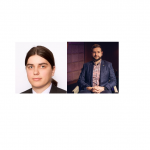
14:30
Don’t become your subscriber’s nightmare, Václav Radoň & Matěj Zima, 101 level
Times of carpet bombing in email marketing are gone. Every good digital marketer knows, that getting your communication frequency right is key to boosting your customer’s engagement and eventually their conversions. Google Ads has frequency capping for years now, so why your email campaigns don’t?
Some customers just might not want your weekly newsletters. That’s a fact. Deal with it. Do you know how to spot them before it’s too late and they unsubscribe from all your emails?
More isn’t necessarily more. Which campaigns to keep and which don’t? And how to decide? Marie Kondo your campaigns, focus on the winners and get better results.

14:30
Approach Reporting Like Never Before: The Ultimate Guide to Report Types, Evan Ponter (@RealEvanPonter), 201 level
Whether you are just starting your Salesforce journey or you are a seasoned pro, this session is guaranteed to change your approach to reporting.
Imagine having one “deluxe” custom report type per object to address a majority of report requests – pulling in up to 1,000 fields from up to 60 related objects with ease. Imagine instantly knowing which report type to choose in order to get the data you need without any trial and error. Imagine how much time and effort you can save when you have a complete understanding of what Salesforce is capable of in the reporting realm.
During this session, you will learn how easy it is to demystify the inner workings of report types, consolidate the litany of overwhelming report type clutter, and empower yourself with a revolutionary paradigm that frees you to confidently query for conclusions. Rejoice as you reimagine designing, building, and running reports – you’ll wonder how you ever did it before.

14:30
Database periscope: an alternative to custom fields, Igor Chtivelband, 201 level
Business decisions taken by Salesforce users are often made based on data coming from other systems (e.g. data submitted by customers through the company website). To facilitate these decisions Salesforce teams have to configure additional custom fields and plug them into data pipelines. This is a tedious process that might be frustrating, not only for developers, who have to maintain myriads of custom fields but also for the end-users, who have to wait weeks until a new field with the desired data appears in their layout.
Recently I have realized that there are two types of entity attributes in our Salesforce organization: those that trigger automatic events (e.g. email dispatch) and those that are observed by human eyes only. The latter attributes do not have to be BROUGHT into Salesforce, it is enough if they are only SHOWN there.
That is why in Billie we have developed a generic Lightning Web Component, named “Database periscope”, which is placed on an Account/Contact/Opportunity object and which shows data directly from the backend database to the end-user. When a record is opened in Salesforce by a user, this component issues an asynchronous call-out with the data request, receives JSON with all the available attributes and presents them in a grid.
This component saved us many hours of development and gave internal stakeholders access to data in real-time.
In my presentation, I would like to explain step-by-step how a similar solution can be built and discuss its advantages and limitations.
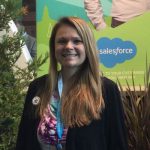
15:00
Tackle Your Everyday Business Problems Like an Architect, Melissa Shepard (@lissa0977), 201 level
What does it take to problem solve like an architect? There are many skills that you can bring into your day-to-day job as an admin or developer in order to help you put on your “architect hat”. Go beyond just solving the problem at hand and expand your thinking to take into consideration the bigger picture applying common architect skills used to solve business problems. We will cover some of these skills and show you how to apply pieces of the pyramid to common business scenarios so that you, too, can problem solve like an architect.

15:00
What is Wrapper Class and How to use it with LWC, Oleh Mykytyn (@Oleh_Mykytyn), 401 level
At some point in time, each salesforce developer meets with the Wrapper class as it gives some extra flexibility to us. You’ve probably already worked with it in Aura Component or Visualforce but what about Lighting Web Component? Do we have such a possibility there and if yes, how can we use wrappers there, and easily connect it with Apex.

15:00
Recurring Revenue: Custom pricing models against standardized billing tools, Michal Mach, 201 level
Have you experienced issues with measuring recurring revenue in Salesforce? The goal of my story is to show reasons why small and medium-sized companies keen on a custom development for their own pricing models. Moreover, if companies continue to grow, they are looking for a standardized billing solution such as Salesforce Revenue Cloud (CPQ + Billing). The question is why?
First, I will introduce the topic by definitions of recurring revenue and this type of business. Then, I mention the specific reasons why some companies choose their own solutions in Salesforce and custom pricing.
Subsequently, I compare why this approach is not suitable in the long term and how the choice of a standardized billing tool (including Salesforce Revenue Cloud) helps the companies grow further.
Finally, I stick out key benefits of the Salesforce Revenue Cloud choice and when to use it appropriately.

15:00
All about Salesforce certifications: Are they worth it?, Tomáš Hnízdil
Have you just recently started to explore the Salesforce universe and are wondering if a Salesforce certification can help you with boosting your career? Does your manager wants you to get Salesforce certified and you don’t know where to start? Or are you an experienced Salesforce admin or developer who is just looking for some tips and tricks to help them finally pass the certification exam?
Join a 13x certified Salesforce-geek to learn all you wanted to know about Salesforce certifications.
15:30
Coffee break. Tea break. Sweet break. And something salt as well. Plus ice cream will be served together with signature porridge you just need to test out as it is super awesome.

16:00
Salesforce CI pipelines demystified, Mariia Pyvovarchuk, 201 level
CI pipelines in Salesforce can save a huge amount of developers’ time which otherwise would be spent managing this process. They also help to prevent a lot of mistakes related to deploying the changes.
We’re going to have hands-on experience on how to successfully create and deploy CI pipelines, reduce manual work and eliminate human error to build a more effective solution. Moreover, we are going to explore some of the options based on typical requirements and processes.

16:00
Design in the wild! A look at Salesforce Designer in their natural habitat, Katka Vokrinkova, 101 level
Salesforce recently launched their newest official career pathway, Salesforce Designer: elevating and prioritising the role design plays across the ecosystem.
Hear from PwC Salesforce Designer Katka Vokrinkova as she shares what being a Salesforce Designer looks like ‘in the wild’ and the important role design and UX plays in project lifecycles. Learn about how to gain design knowledge, apply key concepts in practice, and thus deliver unique, impactful and user-centric experience.

16:00
SFDX – Myth Buster, Svatopluk Sejkora (@SvataSejkora), 201 level
SFDX is an amazing tool, that allows for fast development, robust technology usage and great deployment performance.
During last years we have delivered multiple large projects and many smaller ones exclusively using SFDX.
We will have a look on how SFDX is currently working, what it is allowing to do and what are items that do NOT work as one would expect. We will go through real life scenarios that we have encountered during our projects and explain how we should be working with SFDX in a world of devs, admins, and business admins.
Topic 1 – Admins do work and get it to source control by one click
* Creating new field
* Deleting field / Renaming field
Topic 2 – Can profiles be managed by SFDX?
Topic 4 – Delta automatic deployment
* how to achieve them, what are the community tools to use
Topic 5 – Customer made changes to production, am I done?
Topic 6 – Metadata that doesn’t make sense and how to work with them
* we go through metadata that behaves differently and each user needs to understand how (translations, record types and many more)
I would love to have attendees leaving room with knowledge of what is possible and what are quick wins, what are gotchas and what to not try at all 🙂
Session will be guided with presentation, where all points will be explained and shown via examples within IDE on life scratch orgs.

16:00
Speed up your Org with Before Save flows & Platform events, Narender Singh Singh (@Nads_P07), 201 level
Tell me something:
- Are your end users complaining about Salesforce being slow?
- Does it take ages to save a record in your org?
- Are you running into issues like Apex CPU time limit when mass updating data?
As your org matures and business scales, you’re very likely to encounter these issues in your orgs if not already.
Join me to learn how you can set up your org’s automation which is more scalable and efficient.

16:00
Build your own custom predictions using Einstein Prediction Builder, Pratyush Kumar (@Im_Pratyush), 101 level
If you’re a trailblazer working with an organisation tired of the guesswork?
Join this technical walkthrough to make your Salesforce users more predictive and proactive using Einstein Prediction Builder.
You’ll learn what’s under the hood so that you can create custom AI models on any Salesforce object to predict business outcomes, and can create your own predictions for your customer’s business to power a workflow and make users more efficient and smarter, all using just point and click.

16:30
Using Heroku to elevate the potential of Salesforce development, Matteo Iacucci, 201 level
How can Heroku support app development in Salesforce environment? Let’s find out more about Heroku as a cloud platform, and what benefits it brings to the Salesforce Ecosystem. I will introduce Heroku Add-ons which provide an easy way to add more services and tools for your Heroku app. I will walk you through specific use cases for Heroku, so you can see how it makes app development easy and how it fits into the overall architecture. And I will show you the Heroku platform in a quick demo session to demonstrate its practical use and how you can make it work for your projects too.

16:30
IoT Accelerator for Salesforce, Jan Malý, Michal Skrbek, Michal Bilíček, Charlie Isaacs, 101 level
World of IoT is a maze of proprietary solutions that are usually designed to address a problem in silos – you can have an alarm system application that reads the sensors and notifies the user in case of an issue while another standalone application is focused on the heating system only.
Accenture will demonstrate how standardizing sensor signals onto one unified flow of data through Azure IoT Hub, eventually Google or AWS, and connecting these onto Salesforce Field Service can streamline the work with a customer, including a technician dispatch in case of some defined unexpected situation at client or own site.
This data unification and process standardization is paramount for large corporations that are looking for one global solution for both sensor reading and field service. Come and see how Accenture has addressed these topics that may apply to you as well.

16:30
Talent Development in Central and Eastern Europe, Katerina Jandikova, 101 level
Salesforce is leading by an example… it addresses the Digital Skills & Talent Gap and builds a unique Platform for social change. You might ask yourself, ‘’What does this mean?’‘
It means that Salesforce is purposely growing its ecosystem by establishing a diverse, perpetual pipeline of net new talents. Precisely, the Salesforce Talent Ecosystem team co-invests and co-develops scalable and creative programs that attract and eventually enable new talents with Salesforce skills. But Salesforce does not do it alone… together with our extended Ecosystem – partners, customers, universities, institutions and communities, we form a strong Ecosystem Community. In our community, we act as a Trusted Talent Advisors by sharing best practices and capabilities needed for the digital transformation, which ultimately enhances our diverse pool of talents to get new skills from anywhere.
Join my session to learn more about the presence, activities & growth of the Salesforce Talent Ecosystem team in Central Europe with an emphasis on bridging the digital skills & talent gap together with our ecosystem – partners, customers and academics.

16:30
Advanced Reporting Tips And Tricks For New Admins, Aaron Crear (@aaroncrear), 101 level
Are you a new Admin struggling to create reports for your team? Do you spend way too much time racking your brain trying to get data to present properly? You’re not alone. Many beginner Admins spend hours trying to develop reports that should only take minutes to finish. This session will show you real examples of advanced reporting features that will make your job easier and provide greater value to your users. During this live demo you will learn how to use: Custom Summary Formulas, Row-Level Formulas, Unique Values, Cross Filters, Filed-to-Field Filters, Power of 1, Joined Reports, Buckets, and Custom Report Types. These tips will help you easily identify and present data, bring value to your users and make your job easier. The presentation will help you take your reporting game to the next level.

17:00
Skills for Success: The Skills Every Admin Needs to Succeed in Their Career, Mark Jones (@thisismarkjones)
To thrive in the Salesforce ecosystem as an Admin, you need to ensure you have the relevant skills to succeed.
But what exactly are those skills? In this session, we will answer that question. Come and listen as you hear about the Skills for Success. These Skills for Success are the 14 key skills you need as an Admin to succeed and thrive in your career.
In this session, you will be introduced to each of these skills, and will learn how to implement them into your professional development.

17:00
Code quality and its business value, Nikita Belov, 101 level
Very often the importance of the code quality is underestimated especially by business people who usually don’t see the business value of it. In this session we will try to discover all the advantages of well written code and discuss how coding standards, code reviews and static code analyzer can help to maintain the level of quality and bring the business value.

17:00
Modern JavaScript: Explain it like I’m an Apex developer, Edith Valencia-Martinez (@edith_mxuk), 101 level
Are you an Apex developer who is excited about the LWC framework, but at the same time is confused by the modern JavaScript required?
Maybe this session can help!
During this session, we will go over the JavaScript language from the point of view of an Apex developer, focusing on the differences between the two languages and the frequent confusing areas and pain points.
This session is ideal for those familiar with Apex and who have little or no experience with JavaScript.

17:30
Closing keynote with Cesko.Digital – Changing Czechia for the better through ones and zeroes Cesko.Digital is a community of around 5000 volunteers – professionals from many fields, ranging from IT to project management and marketing, who want to use their free time to help state institutions and non-governmental organizations to make Czechia a better place to live.
18:00
Official end of the long day. Would you still have some energy left or not have enough people we will serve beer & wine.
20:00
We need to be out of the building. Will we continue somewhere? Definitely on Saturday & Sunday – check our weekend activities!
8:00
The doors will open. Coffee & tea ready to put you up to speed, you already had your breakfast at home or in the hotel. Time for catch-up with friends or get a new friends.
Swags for the quickest, sponsors full of energy as well.
8:45
Everyone ready for the welcome words, already seated in the main room. We cannot wait to see you and have a selfie with you.

9:00
Keynote time. Alex will guide us through the next generation of automation tools in Salesforce.
9:45
Quick break. The quickest will be able to grab another tea & coffee, visit sponsors to get additional stamps to the collection for the raffle at the end of the day. And quick chat with friends before each of you will run into different room.

10:00
Process Automation Revisited: From Chaos to Structure, Paweł Dobrzynski (@PDobrzynski), 201 level
Declarative automation is a great tool that helps automate processes without using the code.
But as your system develops the growing number of workflows start to interfere and things do not always go as expected. With the recent introduction of record triggered flows, the landscape changes even more, and admins should revisit their approach to process automation.
In this session we will walk through the best practices of building flows, and present some tips and tricks on how to avoid common mistakes. You will also learn how you can organise your flows to effectively manage the increasing complexity and keep your automation predictable.

11:00
The tooling Api demystified, It is not only for developers, Doria Hamelryk (@doriahamelryk), Fabrice Challier, 201 level
We all know that moment when you are running a Salesforce project for a couple of months (or even years), and we need to do a configuration review.
Which field is not used anywhere, which permission set is assigned to which user, do we have duplicates in our custom labels…
Tricky right?
What if you had the opportunity to retrieve all this info with just a query.
And be sure, Admins will use it even more than developers
12:00
Lunch time
Something typical counting with vegetarians and non-vegetarians as well. Beer included, as well as something sweet to get you ready for the next BIG thing.
13:00
Demojam
Come to see our partners showing you their applications in 3 minutes. No need to have a call with them taking 1 hour of your time, if you can learn everything in such short time. And we will award the best of them at the end.

13:30
What (and why) Admins need to know about Unit Testing, Julio Fernandez (@julipool) & Dorian Sutton (@dorianDBass), 201 level
Sometimes, Salesforce changes can have side effects that are hard to predict. As a Salesforce Admin you need a range of detective skills to investigate confusing behaviour and cryptic error messages.
Does your Salesforce Org have a mixture of declarative and code-based customisation? If so, have you ever run the Unit Tests in your Org?
You have a very powerful tool to investigate and diagnose issues. That tool is Unit Testing, and it’s not only for Developers.
In this session you’ll learn what Unit Tests are, how to run them, and how to interpret their results to get you back on track.

14:00
Everything You Need To Know About Dynamic Forms, Christine Marshall (@ChrisieMarshall), 101 level
Salesforce Dynamic Forms has been in general release for a while and it’s still a hot topic.
While Salesforce is continually working on enhancing this feature, Admins everywhere are learning how best to use it, which has led to a lot of questions.
In this session I’ll do a live demo of how to set up Dynamic Forms, as well as answer the frequently asked questions about it to help you make the most out of this amazing tool.

14:30
Approach Reporting Like Never Before: The Ultimate Guide to Report Types, Evan Ponter (@RealEvanPonter), 201 level
Whether you are just starting your Salesforce journey or you are a seasoned pro, this session is guaranteed to change your approach to reporting.
Imagine having one “deluxe” custom report type per object to address a majority of report requests – pulling in up to 1,000 fields from up to 60 related objects with ease. Imagine instantly knowing which report type to choose in order to get the data you need without any trial and error. Imagine how much time and effort you can save when you have a complete understanding of what Salesforce is capable of in the reporting realm.
During this session, you will learn how easy it is to demystify the inner workings of report types, consolidate the litany of overwhelming report type clutter, and empower yourself with a revolutionary paradigm that frees you to confidently query for conclusions. Rejoice as you reimagine designing, building, and running reports – you’ll wonder how you ever did it before.
15:30
Coffee break. Tea break. Sweet break. And something salt as well. Plus ice cream will be served together with signature porridge you just need to test out as it is super awesome.

16:00
Speed up your Org with Before Save flows & Platform events, Narender Singh Singh (@Nads_P07), 201 level
Tell me something:
- Are your end users complaining about Salesforce being slow?
- Does it take ages to save a record in your org?
- Are you running into issues like Apex CPU time limit when mass updating data?
As your org matures and business scales, you’re very likely to encounter these issues in your orgs if not already.
Join me to learn how you can set up your org’s automation which is more scalable and efficient.

16:30
Advanced Reporting Tips And Tricks For New Admins, Aaron Crear (@aaroncrear), 101 level
Are you a new Admin struggling to create reports for your team? Do you spend way too much time racking your brain trying to get data to present properly? You’re not alone. Many beginner Admins spend hours trying to develop reports that should only take minutes to finish. This session will show you real examples of advanced reporting features that will make your job easier and provide greater value to your users. During this live demo you will learn how to use: Custom Summary Formulas, Row-Level Formulas, Unique Values, Cross Filters, Filed-to-Field Filters, Power of 1, Joined Reports, Buckets, and Custom Report Types. These tips will help you easily identify and present data, bring value to your users and make your job easier. The presentation will help you take your reporting game to the next level.

17:30
Closing keynote with Cesko.Digital – Changing Czechia for the better through ones and zeroes Cesko.Digital is a community of around 5000 volunteers – professionals from many fields, ranging from IT to project management and marketing, who want to use their free time to help state institutions and non-governmental organizations to make Czechia a better place to live.
18:00
Official end of the long day. Would you still have some energy left or not have enough people we will serve beer & wine.
20:00
We need to be out of the building. Will we continue somewhere? Definitely on Saturday & Sunday – check our weekend activities!

10:00
Three pillars and Seven specializations – Product Development Outsourcers Program in a nutshell, Jakub Stefaniak, 101 level
Salesforce announced PDO (Product Development Outsourcer) Program more than 5 years ago. If you still have no idea what is it about, it’s the right time to change it!
We’re going to start some historical background and speak about a dark time full of failed projects and tears. Then, we’re going to discuss seven specializations aligned with typical AppExchange Product LifeCycle phases and the three pillars which helped to ends these times of misery: Knowledge, Experience, and Quality.

10:30
Salesforce DevOps Maturity Matrix, Anna Walach, 401 level
How mature is your release process? We would like to think that we have almost forgotten about the times when state-of-the-art release process involved only ANT, few sandboxes and version control system. The truth is, many Salesforce projects still do not care about sfdx cli, are reluctant to try out scratch orgs and automated testing is considered too much hustle. In the modern world, an efficient DevOps strategy is key to an agile, but robust release process.
Not many materials exist to help set up advanced Devops process for Salesforce. Come and learn about what are the different areas that should be considered when designing a great release process, but also what are the different stages of advancement for each of those areas. Do you need to develop everything in-house? Or maybe use some existing frameworks? Or maybe there are feature-full solutions that you can just deploy? Let’s discuss methods that can be applied in different environments to find out the best strategy to get from where you are now to reach a desired ambition level of improvement and efficiency.

11:00
Combining EDA & API-led Connectivity through MuleSoft for integrating Salesforce with multiple ERPs, Marcelo Caponi, 201 level
Event-Driven Architecture (EDA) has been widely adopted for companies looking to accelerate their digital transformation. These companies realized that batch-based, point-to-point Integrations slow down the business and leave a technical debt. EDA improves the ability to react to changes in real-time and improves the overall customer experience. API-led connectivity approach unlocks data through APIs allowing companies to create a composable business. In this session, I will share how to integrate Salesforce with multiple ERPs by combining EDA & API-led Connectivity through MuleSoft.
12:00
Lunch time
Something typical counting with vegetarians and non-vegetarians as well. Beer included, as well as something sweet to get you ready for the next BIG thing.

13:30
What I have learnt from org merges?, Robert Szerencses (@RobiSzerencses), 201 level
Are you facing the challenge of org merges? It is complex and huge as it sounds. What to consider in the planning phase? What will be the order of subtasks? What to expect from stakeholders? What are the typical pitfalls? And what you can do to avoid future headaches when org merge is not even on the horizon?
Having real life experience in org merges two times already, I am happy to share my experiences from an admin’s perspective. You will walk away with the main roadmap of an org merge project and a list of potential errors to avoid.

14:00
Beyond the Customer: Salesforce in better Talent Acquisition & Engagement- SF Einstein & Analytics way!!, Mohammad Eusuf Daud (@medaud1), 101 level
Marketing Cloud can be leveraged to manage and evaluate the job-postings, email automation and chatbot on carrier page can improve the candidate journey. Custom development of SF platform as HRM facilitates employee engagement. Integration between SF Einstein Analytics and Einstein NLP with cloud data-lake has been helping the customer in identifying better talents, 60%+ saving in effort on recruitment, selection and onboarding. Einstine Chatbot acting as HR helpdesk as well as an assistant in upskill training. The presentation will focus on the business value delivered by Salesforce ecosystem with AI & Big Data using Mulesoft as Enterprise Service Bus. The presentation will also touch the concept of Design Thinking & Agile in Adaptive Delivery Model

14:30
Database periscope: an alternative to custom fields, Igor Chtivelband, 201 level
Business decisions taken by Salesforce users are often made based on data coming from other systems (e.g. data submitted by customers through the company website). To facilitate these decisions Salesforce teams have to configure additional custom fields and plug them into data pipelines. This is a tedious process that might be frustrating, not only for developers, who have to maintain myriads of custom fields but also for the end-users, who have to wait weeks until a new field with the desired data appears in their layout.
Recently I have realized that there are two types of entity attributes in our Salesforce organization: those that trigger automatic events (e.g. email dispatch) and those that are observed by human eyes only. The latter attributes do not have to be BROUGHT into Salesforce, it is enough if they are only SHOWN there.
That is why in Billie we have developed a generic Lightning Web Component, named “Database periscope”, which is placed on an Account/Contact/Opportunity object and which shows data directly from the backend database to the end-user. When a record is opened in Salesforce by a user, this component issues an asynchronous call-out with the data request, receives JSON with all the available attributes and presents them in a grid.
This component saved us many hours of development and gave internal stakeholders access to data in real-time.
In my presentation, I would like to explain step-by-step how a similar solution can be built and discuss its advantages and limitations.

15:00
Tackle Your Everyday Business Problems Like an Architect, Melissa Shepard (@lissa0977), 201 level
What does it take to problem solve like an architect? There are many skills that you can bring into your day-to-day job as an admin or developer in order to help you put on your “architect hat”. Go beyond just solving the problem at hand and expand your thinking to take into consideration the bigger picture applying common architect skills used to solve business problems. We will cover some of these skills and show you how to apply pieces of the pyramid to common business scenarios so that you, too, can problem solve like an architect.
15:30
Coffee break. Tea break. Sweet break. And something salt as well. Plus ice cream will be served together with signature porridge you just need to test out as it is super awesome.

16:30
Using Heroku to elevate the potential of Salesforce development, Matteo Iacucci, 201 level
How can Heroku support app development in Salesforce environment? Let’s find out more about Heroku as a cloud platform, and what benefits it brings to the Salesforce Ecosystem. I will introduce Heroku Add-ons which provide an easy way to add more services and tools for your Heroku app. I will walk you through specific use cases for Heroku, so you can see how it makes app development easy and how it fits into the overall architecture. And I will show you the Heroku platform in a quick demo session to demonstrate its practical use and how you can make it work for your projects too.
18:00
Official end of the long day. Would you still have some energy left or not have enough people we will serve beer & wine.
20:00
We need to be out of the building. Will we continue somewhere? Definitely on Saturday & Sunday – check our weekend activities!

10:00
Intro to the Nonprofit Success Pack, Trish Perkins
Salesforce gives ten free Enterprise Salesforce licenses to qualifying nonprofits all over the world.
Sometimes, just encountering Salesforce for the first time can feel overwhelming for a nonprofit that has, heretofore, relied on spreadsheets or simple databases to keep track of their work.
Trish has been working with this NPSP package since its first iteration, and enjoys taking her clients through a “Kick the Tires” session– a walkthrough of what comes with the package, including some features that many nonprofits don’t know they need or want.
We’ll walk through our engagement with a contact, Minnie Mouse, and all the ways that she and her family are involved in our organization. Our tour will take us through Fundraising, Program Management and Volunteer Management. We’ll look at the basic Nonprofit Success Pack objects.

11:00
Top 5 tips to get your data squeaky clean, Andre van Kampen (@AndreKampen), 101 level
The most valuable component of your Salesforce environment is the data it holds. Bad quality data will get in the way of user adoption and the integrity of your metrics. Nobody has time for unreliable reports and dashboards, right?
In this presentation, I will show you why data quality matters for your environment, no matter the size or age of it. Also, I will share 5 tips on how to get the data in your environment squeaky clean.
#DataQualityFramework #InformationStrategy #MasterDataManagement

11:30
Business analytical craft in context of Salesforce implementation, Jan Zámostný, 201 level
Should we follow the general business analytical approach on Salesforce projects? Should all BA’s be BABOK certified? Is business analysis a different job when implementing SF? Should business analyst be also a solution architect and admin, or even developer? What are advantages and disadvantages of such approaches? What BA tools to use?
Do you like these questions, and have many more?
Let’s try to find answers together!
12:00
Lunch time
Something typical counting with vegetarians and non-vegetarians as well. Beer included, as well as something sweet to get you ready for the next BIG thing.

13:30
Is a Hamburger a Sandwich? Architecting a Salesforce App, Melissa Hill Dees (@melissahilldees), 101 level
Creating the perfect Salesforce app can be frustrating for everyone: admins, developers, consultants, customers, users. Do you know what you want to order? And what do you expect it to be when it arrives? Let’s talk about what you need to know to get the most out of solutioning in Salesforce. Walk away with a new approach to aligning wants, needs, definitions, and processes with stakeholders.

14:00
Lessons from implementing Salesforce Industries / Vlocity in Insurance, Jiří Krám (@jiri_kram), 401 level
In 2020 Salesforce acquired Vlocity, which became now part of Salesforce industries offering (SFI).
This session will be deep dive into the core components of the SFI package for insurance are and how it works together with the Financial Services Cloud specifically focusing on the Insurance vertical.
You will learn:
- What is Ommistudio and its main components
- What is OmniScript how it differ from Flow
- What is DataRaptor and how to use it
- What is Integration Procedure and how it differ from Salesforce APIs
- What are calculation procedures and matrices and how it differs from formulas
- What is Flex Card and how does it differentiate from LWC
- What is Product Admin in SFI and how differs from Product2 object in Salesforce
- What is Policy Admin and where to use it
- What is Quote and how differs from Salesforce CPQ process
- How SFI leverages Experience Cloud
- How to design an Insurance model in FSC
- Main highlights for implementing SFI in Insurance

15:00
Recurring Revenue: Custom pricing models against standardized billing tools, Michal Mach, 201 level
Have you experienced issues with measuring recurring revenue in Salesforce? The goal of my story is to show reasons why small and medium-sized companies keen on a custom development for their own pricing models. Moreover, if companies continue to grow, they are looking for a standardized billing solution such as Salesforce Revenue Cloud (CPQ + Billing). The question is why?
First, I will introduce the topic by definitions of recurring revenue and this type of business. Then, I mention the specific reasons why some companies choose their own solutions in Salesforce and custom pricing.
Subsequently, I compare why this approach is not suitable in the long term and how the choice of a standardized billing tool (including Salesforce Revenue Cloud) helps the companies grow further.
Finally, I stick out key benefits of the Salesforce Revenue Cloud choice and when to use it appropriately.
15:30
Coffee break. Tea break. Sweet break. And something salt as well. Plus ice cream will be served together with signature porridge you just need to test out as it is super awesome.

16:00
Build your own custom predictions using Einstein Prediction Builder, Pratyush Kumar (@Im_Pratyush), 101 level
If you’re a trailblazer working with an organisation tired of the guesswork?
Join this technical walkthrough to make your Salesforce users more predictive and proactive using Einstein Prediction Builder.
You’ll learn what’s under the hood so that you can create custom AI models on any Salesforce object to predict business outcomes, and can create your own predictions for your customer’s business to power a workflow and make users more efficient and smarter, all using just point and click.

16:30
IoT Accelerator for Salesforce, Jan Malý, Michal Skrbek, Michal Bilíček, Charlie Isaacs, 101 level
World of IoT is a maze of proprietary solutions that are usually designed to address a problem in silos – you can have an alarm system application that reads the sensors and notifies the user in case of an issue while another standalone application is focused on the heating system only.
Accenture will demonstrate how standardizing sensor signals onto one unified flow of data through Azure IoT Hub, eventually Google or AWS, and connecting these onto Salesforce Field Service can streamline the work with a customer, including a technician dispatch in case of some defined unexpected situation at client or own site.
This data unification and process standardization is paramount for large corporations that are looking for one global solution for both sensor reading and field service. Come and see how Accenture has addressed these topics that may apply to you as well.
18:00
Official end of the long day. Would you still have some energy left or not have enough people we will serve beer & wine.
20:00
We need to be out of the building. Will we continue somewhere? Definitely on Saturday & Sunday – check our weekend activities!

10:00
Real-time personalization at scale by Salesforce CDP and Interaction Studio, Ekaterina Obolenskaya (@EkatObolenskaya) & Samuel Liska, 201 level
How can companies efficiently manage their separated data sources in one place and deliver personalized experiences to their customers?
During the session we will introduce you the main Salesforce CDP aspects, as a platform for solving the problem of data unification and identity resolution in order to prepare a complete view of your customers and its usage as a single source of truth.
Additionally, with the intention to build truly relevant and connected customer experiences we use natively integrated Interaction Studio platform. It is responsible mainly for managing customer interactions and delivering real-time AI-driven decisioning and granular one-to-one optimization.
During the session we will show case how you can leverage unified data from Salesforce CDP and build trusted relationship with your customers.

11:00
Real time marketing with Salesforce Marketing Cloud, Anastasiya Penska, 101 level
The session will focus on how one can start using Marketing Cloud for real time interaction with your cusomters and show a demo use case of how to build a personalized customer experience on different stages of customer journey. The use case will showcase data capturing about an unknown visitor, engaging potential customer with personalized content and later on curating further communication with a known customer in different channels to create 1:1 communication.

11:30
Beyond Marketing Cloud Content Builder – Content Builder Block SDK, Jakub Lysáček, 201 level
What is a Custom Content Block and why would you need one? How can we drive marketing effectiveness and make content creator’s job easier by extending standard Content Builder functionalities?
I will cover overall architecture, the process of creating custom blocks and common use cases, such as custom feeds, maps, charts, or any third-party widgets.
12:00
Lunch time
Something typical counting with vegetarians and non-vegetarians as well. Beer included, as well as something sweet to get you ready for the next BIG thing.

13:30
SFMC Customer Journey Case Study: How to scale a project for the global leader in the automotive industry, Kristýna Turner, 101 level
Join me for the session, where I take you through some key learning of a recent project within SFMC for one of our global clients – a leader in the automotive industry. I’ll show you how to deal with the project plan, management, execution, and delivery within a very ambitious timeline and with limited resources.

14:00
Known and unknown Salesforce Marketing Cloud limitations… and some workarounds ;-), Cyril Louis (@cyril_louis)
As a Marketing Cloud newbie, you may want to be aware of Salesforce Marketing Cloud limitations! And as a veteran, you may have already faced some limitations…
So what if the Trailblazer Community could support you and share tips and tricks to anticipate limitations?
Join me in this session to learn from what I have faced around topics such as testing, data sync, lead scoring, customer journeys and more.
*Tips you don’t have from official online documentation*

14:30
Don’t become your subscriber’s nightmare, Václav Radoň & Matěj Zima, 101 level
Times of carpet bombing in email marketing are gone. Every good digital marketer knows, that getting your communication frequency right is key to boosting your customer’s engagement and eventually their conversions. Google Ads has frequency capping for years now, so why your email campaigns don’t?
Some customers just might not want your weekly newsletters. That’s a fact. Deal with it. Do you know how to spot them before it’s too late and they unsubscribe from all your emails?
More isn’t necessarily more. Which campaigns to keep and which don’t? And how to decide? Marie Kondo your campaigns, focus on the winners and get better results.

15:00
All about Salesforce certifications: Are they worth it?, Tomáš Hnízdil
Have you just recently started to explore the Salesforce universe and are wondering if a Salesforce certification can help you with boosting your career? Does your manager wants you to get Salesforce certified and you don’t know where to start? Or are you an experienced Salesforce admin or developer who is just looking for some tips and tricks to help them finally pass the certification exam?
Join a 13x certified Salesforce-geek to learn all you wanted to know about Salesforce certifications.
15:30
Coffee break. Tea break. Sweet break. And something salt as well. Plus ice cream will be served together with signature porridge you just need to test out as it is super awesome.

16:00
Design in the wild! A look at Salesforce Designer in their natural habitat, Katka Vokrinkova, 101 level
Salesforce recently launched their newest official career pathway, Salesforce Designer: elevating and prioritising the role design plays across the ecosystem.
Hear from PwC Salesforce Designer Katka Vokrinkova as she shares what being a Salesforce Designer looks like ‘in the wild’ and the important role design and UX plays in project lifecycles. Learn about how to gain design knowledge, apply key concepts in practice, and thus deliver unique, impactful and user-centric experience.

16:30
Talent Development in Central and Eastern Europe, Katerina Jandikova, 101 level
Salesforce is leading by an example… it addresses the Digital Skills & Talent Gap and builds a unique Platform for social change. You might ask yourself, ‘’What does this mean?’‘
It means that Salesforce is purposely growing its ecosystem by establishing a diverse, perpetual pipeline of net new talents. Precisely, the Salesforce Talent Ecosystem team co-invests and co-develops scalable and creative programs that attract and eventually enable new talents with Salesforce skills. But Salesforce does not do it alone… together with our extended Ecosystem – partners, customers, universities, institutions and communities, we form a strong Ecosystem Community. In our community, we act as a Trusted Talent Advisors by sharing best practices and capabilities needed for the digital transformation, which ultimately enhances our diverse pool of talents to get new skills from anywhere.
Join my session to learn more about the presence, activities & growth of the Salesforce Talent Ecosystem team in Central Europe with an emphasis on bridging the digital skills & talent gap together with our ecosystem – partners, customers and academics.

17:00
Skills for Success: The Skills Every Admin Needs to Succeed in Their Career, Mark Jones (@thisismarkjones)
To thrive in the Salesforce ecosystem as an Admin, you need to ensure you have the relevant skills to succeed.
But what exactly are those skills? In this session, we will answer that question. Come and listen as you hear about the Skills for Success. These Skills for Success are the 14 key skills you need as an Admin to succeed and thrive in your career.
In this session, you will be introduced to each of these skills, and will learn how to implement them into your professional development.
18:00
Official end of the long day. Would you still have some energy left or not have enough people we will serve beer & wine.
20:00
We need to be out of the building. Will we continue somewhere? Definitely on Saturday & Sunday – check our weekend activities!

10:00
Managing Complexity in Salesforce, David Felkel, 201 level
Complexity kills – Simplicity is robust. There is a strong correlation between the size of an org and its complexity. The more complex your org becomes, the harder it is to maintain and the costlier your development endeavours become. But where does complexity come from and how can it be avoided?

11:00
How to migrate to Apex Enterprise Patterns?, David Fernandez, 201 level
Currently most implementations are based on multiple APEX patterns and factories that makes really complicated the work between several developers or teams.
The session will be explain how to migrate from a more monolithic code and way of solving requirements into a more extensible way, this by showing how to change the thinking and ways of coding for experience developers but also show the junior devs to think in a more scalable way since the beginning of projects.
12:00
Lunch time
Something typical counting with vegetarians and non-vegetarians as well. Beer included, as well as something sweet to get you ready for the next BIG thing.

13:30
Build your apps everywhere with Lightning Web Components Open Source, Fabien Taillon (@FabienTaillon), 201 level
Did you know that several parts of the tools you’re using on the Salesforce Platform are open source? That you can create a LWR Community using Lightning Base Components and Lightning Design System and host it wherever you want? That you can benefit from new features being part of LWC but not yet available on the Platform like Light-DOM or dynamic components creation? And that some of your existing components can be reused quite easily?
If not, come and see how powerful Lightning Web Components Open Source are!

14:00
Start Building Slack Apps for Salesforce Now, and what the Future Holds, Todd Halfpenny (@toddhalfpenny), 101 level
In this session we’ll go through how you can build Slack apps for Salesforce right now. We’ll cover the architecture, implementation (inc demos), and things to consider when get you started on your Slack-app-building-journey. As well as the apex, we’ll cover the middleware needed, and the use of Slack’s Bolt SDK.
As well as showing how you can build apps today, we’ll also demo and dive into Foyer – Salesforce’s Slack SDK – and what it’ll bring to the table once it’s generally available.

14:30
Fraud detection using Chatter Connect ÀPI and Einstein, Abhishek Kolipey (@AbhiKoliK), 101 level
Fraud Alert !! Fraud Alert !! Do you think that there is fraud happening in your business processes or unusual activities happening in your company? Learn about anomaly detection using Chatter and Einstein. Use Chatter Connect API for fetching data and generate meaningful insights using the Einstein wave. This technique can be used to detect fraudulent activities in your company and the harassment faced by the workforce.
Does your company
1). Use Chatter for communication between Employees and Customers
2). Collaboration & Teamwork Play an Integral Part of your Productivity
3). Want to know what your end users are talking about
4). Know what Kind of issues & problems your Customers/Employees are facing
5). Automate the process based on the Chatter Feeds
Solution
1). Use the Chatter Rest API & Connect API for fetching the chatter data
2). Use this data to generate useful insights by Wave Analytics
3). Based on the Insights invoke a process automatically
Benefits
1). SF Customers & Business User will understand the vast usage of Chatter and Einstein Wave
2). Developers will learn the usage of Chatter Rest API & Connect API
3). Admins will learn about the setting up of feeds polls and questions for wave analytics
15:30
Coffee break. Tea break. Sweet break. And something salt as well. Plus ice cream will be served together with signature porridge you just need to test out as it is super awesome.

16:00
SFDX – Myth Buster, Svatopluk Sejkora (@SvataSejkora), 201 level
SFDX is an amazing tool, that allows for fast development, robust technology usage and great deployment performance.
During last years we have delivered multiple large projects and many smaller ones exclusively using SFDX.
We will have a look on how SFDX is currently working, what it is allowing to do and what are items that do NOT work as one would expect. We will go through real life scenarios that we have encountered during our projects and explain how we should be working with SFDX in a world of devs, admins, and business admins.
Topic 1 – Admins do work and get it to source control by one click
* Creating new field
* Deleting field / Renaming field
Topic 2 – Can profiles be managed by SFDX?
Topic 4 – Delta automatic deployment
* how to achieve them, what are the community tools to use
Topic 5 – Customer made changes to production, am I done?
Topic 6 – Metadata that doesn’t make sense and how to work with them
* we go through metadata that behaves differently and each user needs to understand how (translations, record types and many more)
I would love to have attendees leaving room with knowledge of what is possible and what are quick wins, what are gotchas and what to not try at all 🙂
Session will be guided with presentation, where all points will be explained and shown via examples within IDE on life scratch orgs.

17:00
Modern JavaScript: Explain it like I’m an Apex developer, Edith Valencia-Martinez (@edith_mxuk), 101 level
Are you an Apex developer who is excited about the LWC framework, but at the same time is confused by the modern JavaScript required?
Maybe this session can help!
During this session, we will go over the JavaScript language from the point of view of an Apex developer, focusing on the differences between the two languages and the frequent confusing areas and pain points.
This session is ideal for those familiar with Apex and who have little or no experience with JavaScript.
18:00
Official end of the long day. Would you still have some energy left or not have enough people we will serve beer & wine.
20:00
We need to be out of the building. Will we continue somewhere? Definitely on Saturday & Sunday – check our weekend activities!

10:00
Having serious fun with lwc-datatable and Large Data Volume, Christian Knapp (@ch_sz_knapp) & Christian Menzinger (@chris_menzinger), 201 level
Interactive data-tables are awesome and a challenge – LWC’s lightning-datatable is no exception. It has many, useful features, lots of documentation and can handle various use cases from working with single fields to several records.
Loading Salesforce records with a fixed set of fields and a fixed set of column labels is straightforward and quickly done.
What about the next level, though? Loading a related list for example? Sortable. Searchable. Displaying the table in the user’s end language, with translated columns and values, too, where supported. Scanning a Large Data Volume like 70.000 records.
This talk will not provide a solution. It will focus on the path to a possible solution: Given all these requirements, where do I start? Where and how do I get test records? And 70k! Should sorting happen in the datatable or should Apex do the lifting? Which APIs do I use? When? How often? Where? Why?
Our heroes, Krtek and Dwarf, really had some serious fun with lightning-datatable and 1.5M products: They faced performance issues with 2000 rows in a table and learned that those issues can be mitigated with a few lines of code in Summer 22. At the end, the best way is lazy loading for data table because it also keeps Apex Limits in check.
They also proved that 1.5 millions records fit into a Scratch Org and showed why Snowfakery is a great way to auto-generate test data.

11:00
How to work with risks in Salesforce projects?, Tomáš Holý (@enehanosolution), 201 level
When it comes to risks, everyone usually knows that we need to care for them during the project, but how, when, and what is the main purpose is harder to understand. So let us focus on catching how risks impact the project price. How they differ project by project.
I will also compare risks in agile to traditional models giving you examples specifically for Salesforce projects. Last but not least is managing risks in Bodyshop or Fixed Time & Fixed Price contract model.
Do not underestimate risks in your projects. It is a key factor for successful delivery.
12:00
Lunch time
Something typical counting with vegetarians and non-vegetarians as well. Beer included, as well as something sweet to get you ready for the next BIG thing.

13:30
Run End-to-End Tests with the UI Testing Model (UTAM), Phillipe Ozil (@PhilippeOzil), 201 level
Testing apps is critical to ensure quality and there are different types of tests such as unit tests, integrations tests or end-to-end tests. Join this session to learn about end-to-end tests and discover the UI Test Automation Model (UTAM). UTAM is an Open Source solution built by Salesforce that lets you run UI tests on any kind of app. We’ll walk you through a practical example with a Salesforce app and you’ll learn about the key features that make UTAM a game changer for UI testing.

14:30
As a Salesforce Developer I will… – 7 Ground Rules for Success, Robert Sösemann (@rsoesemann), 201 level
After a decade of working as a developer, consultant, and architect in the Salesforce ecosystem, I believe that it takes more than deep technical skills to be successful. Over and over I have seen a handful of meta-skills separate the rock stars from the crowd. Ground Rules have made Salesforce developers like me more effective in their work, more flexible towards changes, and more composed when the stress levels are high.
In this session, I will share the 7 Ground Rules – with practical examples and tools you can use next sprint – that will aid you and your team to success.

15:00
What is Wrapper Class and How to use it with LWC, Oleh Mykytyn (@Oleh_Mykytyn), 401 level
At some point in time, each salesforce developer meets with the Wrapper class as it gives some extra flexibility to us. You’ve probably already worked with it in Aura Component or Visualforce but what about Lighting Web Component? Do we have such a possibility there and if yes, how can we use wrappers there, and easily connect it with Apex.
15:30
Coffee break. Tea break. Sweet break. And something salt as well. Plus ice cream will be served together with signature porridge you just need to test out as it is super awesome.

16:00
Salesforce CI pipelines demystified, Mariia Pyvovarchuk, 201 level
CI pipelines in Salesforce can save a huge amount of developers’ time which otherwise would be spent managing this process. They also help to prevent a lot of mistakes related to deploying the changes.
We’re going to have hands-on experience on how to successfully create and deploy CI pipelines, reduce manual work and eliminate human error to build a more effective solution. Moreover, we are going to explore some of the options based on typical requirements and processes.

17:00
Code quality and its business value, Nikita Belov, 101 level
Very often the importance of the code quality is underestimated especially by business people who usually don’t see the business value of it. In this session we will try to discover all the advantages of well written code and discuss how coding standards, code reviews and static code analyzer can help to maintain the level of quality and bring the business value.
18:00
Official end of the long day. Would you still have some energy left or not have enough people we will serve beer & wine.
20:00
We need to be out of the building. Will we continue somewhere? Definitely on Saturday & Sunday – check our weekend activities!
